A Complete Guide to Buying Second Hand Kitesurf Gear
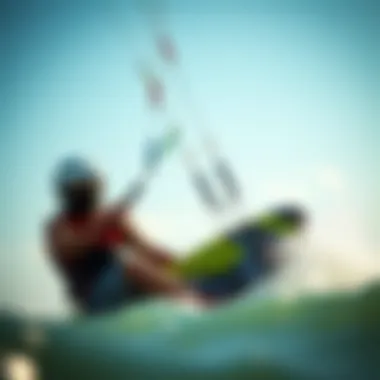
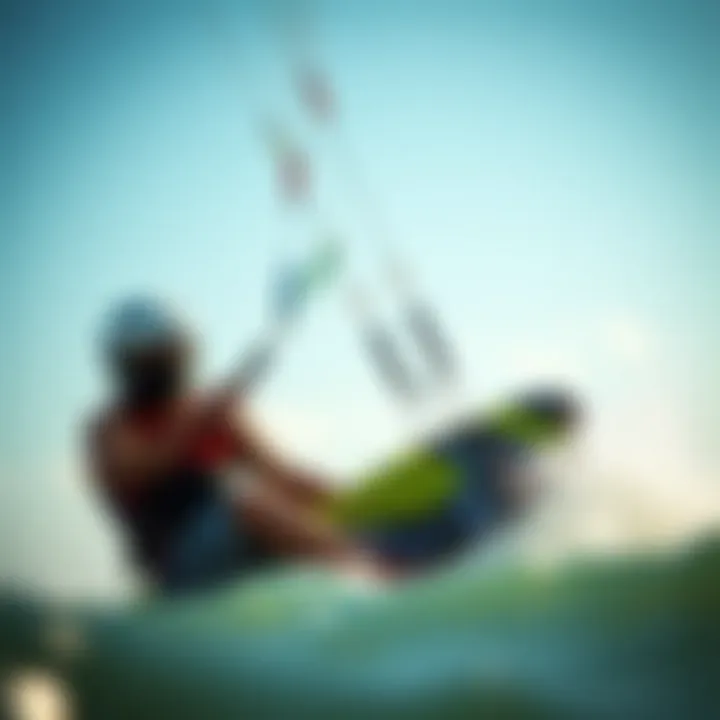
Intro
Kitesurfing, an exhilarating water sport that combines elements of surfing, windsurfing, and paragliding, opens up countless adventures on the waves. The thrill of harnessing the wind to glide over water is unmatched. However, diving into this exciting sport can be quite the investment, particularly for newcomers or casual participants. Luckily, the second-hand market offers a treasure trove of options for gear, helping you save those hard-earned dollars while still accessing high-quality equipment.
In this comprehensive guide, we shall navigate the ins and outs of purchasing second-hand kitesurfing gear. Our goal is to equip both novices and seasoned kiteboarders with the knowledge they need to make well-informed decisions. We will delve into the benefits of buying used gear, pointers for evaluating the condition of equipment, the importance of understanding market trends, and tips for maintaining your gear to ensure it lasts for many sessions on the water.
With rising interest in sustainable practices, purchasing second-hand gear isn't just a smart financial move; it contributes positively to the kiteboarding community. Let’s dive deeper into the specifics and unravel the myriad aspects that surround buying second-hand kitesurfing equipment.
Equipment Insights
Kitesurfing gear is as varied as the abilities of those who ride it, and understanding the nuances of each piece of equipment can make a significant difference in your technique and enjoyment on the water.
Latest Gear Reviews
When considering second-hand purchases, being up-to-date on the latest models can be a major advantage. Brands like Naish, Cabrinha, and Slingshot often release advanced gear that constantly seeks to improve performance while decreasing weaknesses found in older models. For instance, if you’re eyeing a used Naish Pivot kite, it’s crucial to compare its specs with the latest iterations. You might discover that certain improvements in stability or control can be beneficial for your riding style.
However, it’s not just about new tech. Many seasoned kiteboarders might have gems from prior years that still hold their own, but understanding their context against the newer models is key. Also, specialized forums such as Reddit offer reviews and real-user feedback that can help steer you in the right direction.
Essential Gear Maintenance
One of the biggest rewards of buying second-hand is that it can come with a better understanding of how to maintain gear — assuming prior owners took good care of it.
- Inspect for Damage: Check the kite for punctures, tears, or worn-out seams. Look closely at the leading edge and struts, as this is where most wear and tear occurs.
- Lines and Control Bar: Ensure the lines are intact. Look for frays or discoloration. The control bar should be free of cracks and other damage.
- Board Condition: Scrutinize the board for dings and delamination. Remember, minor scratches might be cosmetic, but significant dings can affect performance.
- Cleaning and Storage: Always rinse your kites and boards with fresh water after use. Proper storage away from direct sunlight extends lifespan significantly.
It's important to develop a routine maintenance habit. The more you care for your gear, the longer it'll serve you well.
"Proper kitesurf gear maintenance isn't just about extending lifespan; it's about enhancing performance, stability, and ensuring safe rides."
By utilizing these insights and techniques, any kitesurfing enthusiast can embark on their quest for second-hand equipment with confidence. Ensuring you invest in quality gear enhances the overall experience and helps craft a more sustainable practice in the vibrant kitesurfing community.
Stay tuned as we explore the techniques to master the art of kitesurfing.
Intro to Second Hand Kitesurfing Gear
Purchasing second hand kitesurfing gear can be a revelation for many kiteboarding enthusiasts. Whether you are a seasoned pro or just dipping your toes into the sport, buying pre-loved equipment can offer significant advantages. Not only does it help save a pretty penny, but it also opens the door to a wide array of options that might otherwise be out of reach.
The benefits of buying second hand go beyond just the monetary gains; they resonate deeply with the principles of sustainability and responsible consumerism. As the world shifts towards greener practices, kitesurfers are increasingly recognizing the value in reusing gear, thus reducing waste in an industry that often encourages rapid turnover of equipment.
In this guide, we’ll navigate through various aspects that make second-hand gear an attractive option. From cost-effectiveness to environmental impact, every angle is worth examining. Key considerations, such as the condition and maintenance of gear, are critical to ensuring you get a reliable product. You'll also find insights on evaluating the credibility of sellers and platforms, which can prevent pitfalls that might come with purchasing second-hand gear.
For kiteboarders, second hand doesn’t mean second rate; in fact, it often means an opportunity to score high-quality gear at a fraction of the price. Imagine finding a well-kept board or a sturdy harness that has seen a few seasons of waves but still has plenty of life left. These gems can transform your kiting experience without breaking the bank.
"Buying second hand is like a treasure hunt. If you know what to look for, you might just discover hidden gold."
In summary, this introduction aims to establish why engaging with the second hand kitesurfing market is not only sensible but also beneficial. By understanding the nuances of second-hand gear, kiteboarders can make informed choices that align with their goals, financial constraints, and ecological consciousness.
Understanding Kitesurfing Equipment
Kitesurfing is not just about riding the waves; it involves a symphony of equipment that harmonizes to offer a thrilling experience. Understanding kitesurfing gear is vital, especially when delving into the realm of second-hand purchases. Knowledge of the various components, their functionalities, and attributes can weigh significantly in decision-making.
Whether you’re a seasoned rider or a newbie eager to catch the wind, having insight into kitesurfing gear contributes to safety, performance, and overall enjoyment. Adopting a discerning eye enables you to spot high-quality pieces that might otherwise get overlooked in a bustling online marketplace or a crowded local shop. Let's explore the core kitesurfing equipment types to understand how they contribute to your performance.
Types of Kitesurfing Gear
Kites
Kites are at the heart of the kitesurfing experience. They capture wind energy to propel you across the water. Most commonly made of durable materials like ripstop nylon, kites vary in design—from inflatable to foil kites.
A standout feature of inflatable kites is their ability to provide a stable flying position, which translates into easier handling. They’re popular among beginner to intermediate kiteboarders because they offer a good balance of lift and control. However, they're not foolproof. The often bulky nature of inflatable kites can make them tricky to pack and transport.
When considering second-hand options, inspect the bladder condition and check for any leaks or repairs. Minor wear can often be manageable, but avoid those that show signs of fraying as this can lead to compromised performance.
Boards
Boards serve as your connection to the water. Available in various shapes—directional and twin-tip being the two primary formats—each offers a distinct ride. Twin-tip boards are particularly favored due to their versatility; you can ride in either direction without having to turn the board around.
The main characteristic of boards worth noting is their material construction, often being composite or wood-based. Composite boards tend to be more durable and lightweight, providing easy maneuverability, while wooden boards deliver a different level of feedback and feel on the water. When checking second-hand boards, focus on the bottom surface for scratches or dings, as damage can affect performance.
Harnesses
Harnesses help transfer the kite's pull into your body while allowing for mobility. There are seat and waist harnesses to choose from. Waist harnesses tend to be the go-to for many kiteboarders as they provide freedom of movement, especially for jumping tricks.
Another feature to consider is the padding. A well-padded harness can significantly enhance comfort during long sessions on the water. However, second-hand harnesses may come with wear and tear, impacting their comfort and support. Check for overall wear in the straps and buckles, as replacing these can be a hassle.
Safety Equipment
Safety equipment is a non-negotiable aspect. This includes items like impact vests, helmets, and leashes. These add layers of protection against possible accidents while kitesurfing.
A key feature of safety gear, especially impact vests, is their buoyancy factor, which assists in floatation during mishaps. Although they may not be the most glamorous part of your kit, investing in reliable safety gear, even if second-hand, is essential. Inspect for signs of wear and ensure that they meet current safety standards.
Importance of Quality Gear
When it comes to kitesurfing, quality gear isn't just a luxury; it’s a necessity. A well-constructed piece of equipment contributes greatly to your overall experience on the water.
Safety
Quality gear directly influences your safety while kitesurfing. Poorly manufactured or damaged equipment can lead to mishaps that may endanger your life. Opting for gear a known brand can often mean adhering to higher safety standards.
Performance
Performance is greatly influenced by the quality of your gear. High-quality equipment ensures a smoother ride, better responsiveness, and increased overall control. For instance, a well-constructed kite reacts promptly to wind changes, providing a responsive riding experience.


Durability
Finally, durability is another critical factor. The harsh marine environment can be hard on equipment. Higher quality gear generally handles wear and tear better, extending its usable life and delivering better value over time, especially when considering second-hand purchases. Look for signs like discoloration or excessive scratches that often indicate a shorter lifespan.
Advantages of Second Hand Gear
When it comes to kitesurfing, many adrenaline seekers find themselves intrigued by the advantages of opting for second hand gear. Opting for pre-owned equipment can be a smart move for both seasoned riders and newcomers alike. It allows individuals to enjoy the thrills of this sport while keeping budgets in check and promoting eco-friendly practices. Here, we’ll explore the notable benefits associated with purchasing second-hand kitesurfing gear and why this approach is gaining traction within the community.
Cost-Effectiveness
Budget-Friendly Options
For those diving into the kitesurfing world, the fees associated with brand-new gear can be off-putting. Many enthusiasts may feel like they would need to break the bank to get started. This is where budget-friendly options come into play. Purchasing second-hand gear opens up a world of opportunities to acquire quality equipment without emptying your wallet.
These options often include lightly used kites, boards, and harnesses that still maintain functional integrity. Imagine snagging a higher-end kite that’s merely seen a couple of sessions and is now available at a fraction of the retail price. This allows new riders to test the waters of kitesurfing without the significant financial commitment.
However, it’s crucial to keep a keen eye on the quality of the gear. Not all deals are created equal, so ensuring the equipment has proper maintenance history is essential. This thoughtful approach not only aids in saving money but also lends to a more enjoyable learning experience, making it a popular choice among budding kiteboarders.
Value Retention
In addition to budget aspects, value retention is another gem when discussing second-hand gear. Unlike some sports where equipment depreciates rapidly, certain kitesurfing gear stays on par in terms of value if maintained correctly. For instance, a robust kite model from a reputable brand can retain its worth due to ongoing demand and brand loyalty among enthusiasts. This means that should you decide to upgrade to newer models down the line, you could recapture a significant portion of your initial investment.
The trade-in market for kitesurfing equipment is continually evolving, with many sellers looking for gently used gear. Thus, as you invest wisely in second-hand pieces, they might even serve as solid stepping stones in your kitesurfing journey, allowing solid returns when it comes to resale or trade-in scenarios.
Environmental Considerations
Sustainability in Kitesurfing
The environmental landscape has shown increasing concern regarding sustainability. Sustainability in kitesurfing focuses on how our purchasing choices impact the planet. By opting for second-hand gear, each kiteboarder plays a part in conserving resources that would otherwise go into producing new equipment.
Kitesurfing gear manufacturing has its share of environmental effects—including the extraction of materials and energy consumption during production. When purchasing pre-owned items, you’re effectively making a statement, embracing a more responsible approach, and extending the lifecycle of existing gear. This not only helps reduce the carbon footprint but also sets a responsible example for fellow kiteboarders, promoting greater awareness within the community.
Reducing Waste
Tied to sustainability is the aspect of reducing waste. Every year, tons of kitesurfing gear gets discarded, often ending up in landfills as individuals opt for the latest and greatest models. By choosing second-hand options, you contribute to minimizing this waste. Imagine the positive impact on the environment when small actions such as buying used gear snowball into a collective effort across the kiteboarding community.
The ripple effects of purchasing second-hand equipment means extending the useful life of durable kitesurfing gear. This decision becomes a small but significant shift toward a more sustainable sport, benefiting not just the users, but the environment as well. It's a win-win situation, with both the thrill of kitesurfing preserved and Mother Earth getting a helping hand.
In summary, the advantages of going for second-hand kitesurfing gear extend far beyond just saving dollars. It embodies conscious decision-making—combining affordability with environmentally sustainable practices—ensuring a positive impact on individual wallets and the planet alike.
Evaluating Second Hand Equipment
When it comes to kitesurfing gear, evaluating second-hand equipment is a crucial step for a smart purchase. It's not just about snagging a good deal; it’s future safety and performance that hinges on the condition of the gear. Many enthusiastic kiteboarders tend to focus solely on the price tag, but overlooking the fundamental checks can lead to regret down the line. The right evaluation can save you from a pricey mistake or worse, a serious accident on the water.
Key aspects of gear inspection help in distinguishing between a worthy buy or simply junk that’s been recycled with the illusion of value. Plus, knowing what to look for adds a layer of confidence in your decisions. So, let’s break this down into a manageable checklist.
Key Aspects to Inspect
Fabric Condition
Contemplating fabric condition is essential. The fabric’s integrity directly correlates to how well the kite performs and how long it lasts. If you see tears, frays, or discoloration, it could indicate a compromised structure. Kites are often exposed to sun, saltwater, and wind, so fabric wear can be more than just cosmetic; it might jeopardize your safety or ease of riding.
A well-maintained fabric is generally smooth to the touch and shows no signs of distress. If a seller boasts about a kite being "barely used" but the fabric looks like it's seen its fair share of harsh conditions, proceed with caution. Remember, investing in quality materials pays off.
Stitching and Seams
Next up is inspecting stitching and seams. This may seem like a trivial detail, yet the strength of seams can be the difference between a smooth ride and a catastrophic failure. The seams should appear neat, with no loose threads or gaps. Check if the stitching is double-stitched, which can enhance durability significantly.
A kite with poor seam construction is likely to develop leaks or experience structural failure much sooner, leading to early replacements. On the other hand, well-stitched seams hint at thoughtful construction and a reliable performance. When it comes to gear meant to withstand the forces of nature, you can’t skim on quality.
Overall Functionality
Evaluating overall functionality pulls together aspects like control, responsiveness, and stability during use. You want to ensure that the kite properly inflates and deflates and maintains its shape during use. It’s worth asking the seller if you can rig it up and inspect its performance before finalizing any decisions. Equipment with a solid overall functionality gives peace of mind, enabling you to focus on the thrill of the ride without worrying about malfunctioning gear.
Kites that tend to lose their shape or inflate poorly indicate underlying issues that could pose risks on the water. So when assessing the overall functionality, look for kites that feel lively and responsive with each control input you make.
Questions to Ask Sellers
Once you’ve inspected the physical aspects, diving deeper into the seller’s knowledge about the item is just as vital. It’s not just about what the equipment looks like; it’s about its history, and that brings us to the crucial questions to consider.
Usage History
Understanding the usage history helps illuminate the gear’s life. It's imperative to ask the seller how often and in what conditions they've used the equipment. Frequent hard use could significantly impact performance and longevity of the gear. A seller who’s honest about the item’s history builds trust and ensures you aren’t walking into a situation where you might end up with gear that’s had its share of rough rides.
Accident Reports
When checking into accident reports, it’s about gathering intel on whether the gear has suffered any damage from mishaps. Even if a kite looks pristine, past accidents can compromise its safety. A small tear or a repair job can lead to significant performance issues, especially in extreme conditions. Equip yourself with facts, because knowing the history can steer you clear of disasters.
Maintenance Records
Asking about maintenance records is a smart move. Gear that’s regularly maintained often translates to a longer lifespan. If the seller can provide proof or details about repairs, cleanings, or storage practices, this clarity can reassure you about their investment in the gear. Conversely, lack of any records can pose questions on how the gear was treated; it might hint at neglect. A diligent seller who has maintained their equipment properly paints a more appealing picture for potential buyers.
"Evaluating gear isn’t just smart; it’s essential for safety and performance. Take it serious."
Where to Find Second-Hand Gear
Finding the right second-hand kitesurfing gear can be a bit like searching for a needle in a haystack, but it’s essential for any kitesurfing enthusiast looking to snag a good deal. The importance of knowing where to look cannot be overstated, as the right marketplace can significantly influence the quality and price of the gear you acquire. In this section, we’ll dive into some popular avenues where you can find second-hand equipment, focusing on both online platforms and local options.
Online Marketplaces
Online marketplaces have revolutionized how we buy and sell items in recent years, and kitesurfing gear is no exception. These platforms provide a wide array of options, often at varying price points.
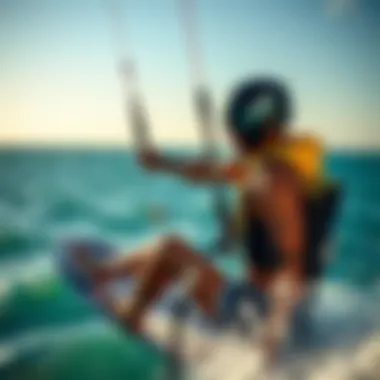

eBay
When it comes to online shopping for kitesurfing gear, eBay stands tall as a favored choice. Its vast inventory ranges from kites to boards, giving buyers plenty of options to sift through. A key characteristic of eBay is the auction model, which often allows items to be purchased below retail price, making it a beneficial choice for budget-conscious kiteboarders.
One unique feature of eBay is its buyer protection program, which reassures customers if they encounter any issues post-purchase. However, potential downsides include the risk of overbidding during an auction or receiving gear that doesn’t match the listing description. Always ensure to check seller ratings before taking the plunge!
Facebook Marketplace
Facebook Marketplace has exploded in popularity for local buying and selling, providing an excellent platform for kitesurfing enthusiasts. The local focus allows buyers to connect directly with sellers in their area, creating opportunities to inspect the gear before purchasing.
One notable aspect of Facebook Marketplace is its integration with social profiles, which can foster a level of trust. However, it lacks the formal protections seen in other marketplaces, so navigating transactions can be a bit of a gamble. Always meet in public places and inspect gear thoroughly to avoid pitfalls.
Kiteboarding Forums
Turning to Kiteboarding Forums can also open up unique avenues for finding second-hand gear. These dedicated communities focus on all things kitesurfing, making them a valuable resource for connecting with other enthusiasts. Not only can you discover gear sold directly by fellow kiteboarders, but you might also find advice and recommendations about what to buy or what to avoid.
Forums often have classified sections where users post their gear for sale, which could lead to fantastic deals that you won't find elsewhere. Like any online marketplace, there’s a degree of risk since you’re dealing with individual sellers, but the shared passion can make these transactions feel more trustworthy.
Local Shops and Exchanges
While online marketplaces offer convenience, local shops and exchanges present a hands-on approach to finding gear, allowing you to physically assess equipment before making a commitment.
Kiteboarding Shops
Kiteboarding Shops generally have a selection of second-hand gear, often paired with the expertise of knowledgeable staff. A significant advantage of shopping at a local shop is their ability to provide personalized recommendations based on your skill level and specific needs.
Many shops offer a trade-in program where you can bring in your old gear for credit towards new or used equipment. However, prices within shops can be higher than those found online, so be prepared to potentially pay a premium for the service and assurance they offer.
Community Events
Community Events, such as kiteboarding contests or local meetups, can be excellent opportunities to scout second-hand gear. These events bring together kiteboarders from various backgrounds, and stalls often feature equipment for sale. Here, community vibes create a sense of camaraderie, which can lead to honest dealings and fair prices.
However, these events are not always frequent, making it necessary to keep an eye on local calendars. When they do happen, they present a golden opportunity to connect with fellow kiteboarders, learn from each other, and pick up gear in a lively, engaging atmosphere.
Testing Equipment Before Buying
When it comes to acquiring second-hand kitesurfing gear, one cannot afford to skip the crucial step of testing equipment before making a purchase. Taking the time to thoroughly test the gear allows prospective buyers to gauge its functionality, overall condition, and suitability for their individual needs. It's much like trying on a pair of shoes before shelling out your cash; a fitting experience can save you quite the headache down the road.
Importance of Test Rides
A test ride or, in this case, a test run of the kitesurfing gear, is an invaluable part of the buying process. It puts you in the driver’s seat, so to speak, allowing you to gain firsthand experience of how the equipment handles. You won’t just be relying on the seller’s word about how it performs. Instead, you can feel the balance, responsiveness, and control of the equipment in real-time.
This dynamic experience can reveal aspects of the gear that you might not pick up on through mere inspection. Think about it: a kite may look pristine on the outside, but during a test, you might notice discrepancies in how it responds to wind pressure. A dragonfly could flit by that captures your attention, but the kite should hold its course. By doing a trial run, you are actively checking the vibe of the gear against your own skills and expectations.
Assessing Performance
When evaluating kitesurfing gear, performance can be broken down further into three key elements: Control, Stability, and Responsiveness.
Control
Control refers to how effectively you can manipulate the kite or board during maneuvers. This aspect greatly contributes to ensuring a safe and enjoyable ride. A high-quality kite offers excellent feedback through the lines, allowing for precise inputs. If you're looking at a second-hand kite, it’s pivotal to check whether the control lines are worn or frayed.
- Key Characteristic: A kite’s ability to respond to your movements seamlessly.
- Why it Matters: If the control is lacking, you might find yourself in a tricky spot during a ride, resulting in either failure of a jump or a wipeout.
- Unique Feature: Kites with adjustable trim systems improve control under varied wind conditions. Sticking to known brands for second-hand gear can ensure that advanced features are still in play, but double-checking condition is paramount.
Stability
Stability indicates how well the kite holds its position in the air while being flown. An unstable kite can lead to unexpected drops or erratic movements, potentially compromising the safety of the rider.
- Key Characteristic: A stable kite maintains consistent flight characteristics, allowing you to execute maneuvers smoothly.
- Why it Matters: It's essential for both beginners and advanced riders. Beginners need stability to build confidence, while advanced kiteboarders rely on it during more technical tricks.
- Unique Feature: Look for kites with segmented design or evenly distributed canopy area for added stability. If the equipment shows signs of tumultuous past rides, it might have stability issues that won't serve you well.
Responsiveness
Responsiveness pertains to how quickly the kite reacts to your inputs, particularly with steering and power adjustments. This quality is vital for executing tricks or navigating changing conditions in the water.
- Key Characteristic: Quick turn rates and immediate reaction to the rider’s inputs.
- Why it Matters: A responsive kite can be your best ally in maximizing performance, be it for jumping or simply riding a wave.
- Unique Feature: Look out for kites with a higher aspect ratio as they generally showcase improved responsiveness, yet they also require more expertise to manage effectively. Always bear the user's skill level in mind when assessing responsiveness, as a highly responsive kite might not be suitable for novice cantidates.
Maintenance of Second Hand Gear
Keeping your second hand kitesurfing gear in good shape is not just a smart move but also essential for ensuring a great experience on the water. Proper maintenance can drastically extend the life of your equipment and ensure it performs as desired. After all, when you're out kiteboarding, the last thing you want is for something to fail because it wasn't looked after. In this section, we'll break down some routine care tips and delve into long-term care strategies for your gear.
Routine Care Tips
Washing Procedures
Washing your kitesurfing equipment may seem like an afterthought, but it plays a vital role in ensuring longevity. Salty water, sand, and sun exposure can wear out your gear over time. A simple wash can prevent grime build-up, which can lead to deterioration. The key here is using fresh water, which is widely considered the best practice. By rinsing your kite and other gear after each session, you reduce the wear and tear caused by salt and other particles.
A crucial feature of effective washing is to use mild detergents when necessary, as harsh chemicals can weaken fabric fibers and diminish their integrity. While this might appear beneficial in the short term, it could backfire in the long haul. Consistent washing not only extends the life of the fabric but also ensures that your gear performs optimally when needed the most.
Storage Conditions
How you store your kitesurfing gear matters just as much as how you care for it. Proper storage conditions can significantly impact the integrity of your gear. Ideally, items should be stored away from direct sunlight, which can degrade materials and color over time. A cool, dry place is perfect. Also, avoid stacking equipment heavily on top of each other since this can lead to dents and bends that make certain components less effective.
A unique feature of keeping your gear in a breathable bag or container is that it prevents mildew buildup, which can ruin your equipment before you even get a chance to use it. As you consider long-term care, the right storage conditions will help maintain your gear’s performance and aesthetic appeal, thus ensuring that it serves you well for years.
Long-Term Equipment Care
Caring for second hand gear isn't just a one-time deal; it's more like nurturing a friendship. It requires regular attention and occasional interventions to keep everything running smoothly.
Repairing Minor Issues
It’s easy to brush off minor issues because they seem insignificant, but ignoring them can lead to bigger problems down the line. Small repairs—like patching up a tiny tear in your kite or replacing a worn-out strap on your harness—can make a world of difference. Addressing these issues promptly not only helps in prolonging the lifespan of your gear but also improves its functionality.
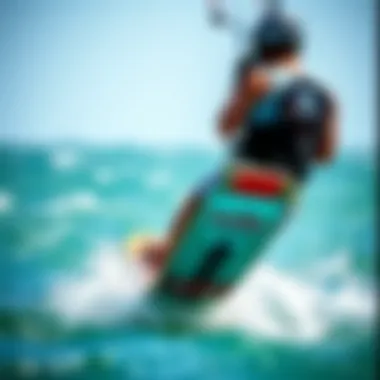
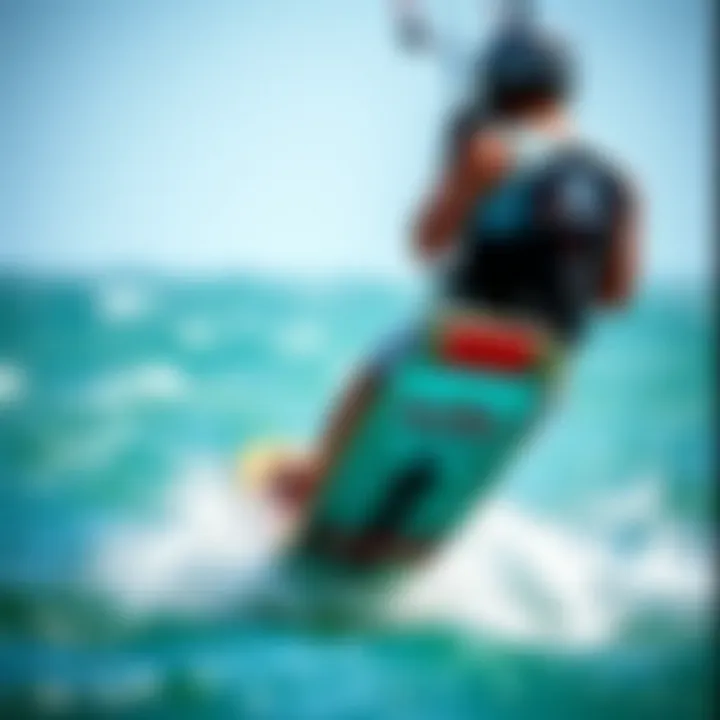
The standout aspect of promptly repairing minor issues is that it often costs less than waiting until the problem turns into a major repair. Being proactive can save you money while ensuring you’re always ready to hit the waves.
Upgrading Components
Sometimes, rather than fixing the old, investing in new components can be the way to go. Upgrading certain parts, like switching out an old control bar for a newer model, can significantly enhance your kitesurfing experience. It can offer improvements in response times and safety features, ultimately making your time on the water more enjoyable.
One notable feature of upgrading components is the ability to customize your rig to fit your needs better. This flexibility not only makes for a more tailored experience but can also keep you in sync with the latest performance standards. However, it’s essential to carefully evaluate upgrades to ensure they are compatible with the rest of your gear.
Investing time and resources into maintaining and properly storing your second hand kitesurfing gear can make all the difference between a good ride and a fantastic one.
By following these maintenance tips, you help not just yourself, but the environment by promoting sustainability in kitesurfing, and that’s something every kiteboarder should stand by.
Common Pitfalls in Buying Second Hand Gear
When diving into the world of second-hand kitesurfing gear, it is crucial to navigate carefully through the potential pitfalls that could land you into tricky situations. The allure of affordable prices often overshadows the necessity of a meticulous evaluation, which can lead to costly mistakes down the line. Sure, the price tag may be appealing, but what lies beneath that surface can significantly affect your riding experience and safety. Therefore, understanding common pitfalls in purchasing second-hand gear is essential for making informed decisions.
Overlooking Important Details
In the whirlwind excitement of securing what seems like a steal, it can be easy to gloss over critical details. Buyers may focus on aesthetics, thinking a shiny new graphic means the gear is in top form. However, not checking the kite's fabric thoroughly, for example, might mean missing out on critical tears or frays that could endanger you mid-session.
- Condition of the Material: Always inspect for any fading or damage to the material. Make sure it's not just visually appealing but structurally sound as well.
- Test for Mold or Stains: Mold can often set into equipment that has been stored improperly. This can weaken the structure of the kite and make it much less reliable.
- Look for Wear and Tear: Check the stitching on seams and connections. An overlooked seam can lead to catastrophic failure while out on the water, compromising both safety and performance.
Don’t just rely on a seller’s word. It’s always better to dig deeper. Making a checklist of what to inspect can keep you from being caught off guard.
Scams and Misrepresentations
The second-hand market is not immune to nefarious players looking to take advantage of eager buyers. Scams can come in various shapes and sizes, often leading purchasers on a wild goose chase that ends in disappointment and a lighter wallet.
Be wary of:
- Too-Good-to-Be-True Deals: If a deal seems excessively low compared to others, it may be a bait to lure you in. Research the market average for the equipment you’re considering.
- Incomplete Descriptions: Sellers who provide minimal information about gear should raise red flags. Legitimate sellers are happy to provide a thorough and honest account of the condition and history of their kitesurfing gear.
- Missing Transparency: Always ask for maintenance records or previous usage history. Sellers who can't provide this information may not be forthright about the condition of their gear.
"Trust is good, but verification is better."
Remember, the kitesurfing community thrives on trust and camaraderie, but it always pays to be alert. In your pursuit of second-hand gear, keep your guard up and don't rush into any decisions. By being vigilant, you can extract the joy of kitesurfing without the burdens of misguided purchases.
Evaluating Market Trends for Gear
Understanding market trends is essential for any kiteboarder looking to make an informed decision about second-hand gear. The kitesurf equipment landscape can change rapidly, influenced by factors like technological advancements, brand reputation, and consumer preferences. When evaluating market trends, kiteboarders can identify the most sought-after items, which often correlates with better quality and value retention.
Seasonal Market Changes
Kitesurfing is heavily seasonal. In many regions, demand for new and second-hand gear peaks during spring and summer when enthusiasts are eager to hit the waves. As the season winds down in autumn, prices for used gear often drop. It's not unusual to find last-season equipment prices slashed by 30% or more as shops clear inventory or individuals look to replace older items with newer models. This is a prime time for buyers to snag a great deal.
"Seasons dictate not only buying patterns but also the availability of quality equipment. Understanding this helps you navigate the second-hand market more astutely."
Additionally, the weather can impact the condition and usage of used gear. A summer filled with strong winds might lead to more wear and tear on kites and boards, so inspecting gear that has been heavily used during such conditions is prudent. Conversely, equipment that saw minimal use may present a highly viable option.
Brand Popularity and Its Impact
Brand reputation plays a significant role in the second-hand market. Certain brands like Naish, Cabrinha, or Slingshot have longstanding reputations for producing reliable gear that holds its value. When looking at second-hand purchases, it's wise to consider the brand's standing in the community. Consumers often share insights and reviews on numerous platforms, including reddit.com or specialized kitesurfing forums.
The impact of brand popularity can manifest in several ways. Firstly, sought-after brands generally command higher resale prices, as demand remains strong. This, however, also translates into potentially higher-quality gear available for a slight premium. For attendees, finding the right balance between affordability and brand reliability can mean assessing personal preferences against what’s trending.
In contrast, lesser-known brands may offer tremendous value but come with uncertainty regarding durability and performance. It's essential to weigh these factors carefully before finalizing any purchase. As a discerning kiteboarder, keeping an ear to the ground on these trends can ensure maximized investment and enhanced enjoyment on the water.
By staying informed about seasonal changes and brand popularity, kiteboarders can make smarter choices when diving into the second-hand market, ultimately leading to better experiences and sustainable practices. Relevant resources for keeping up with these trends include kiteboarding blogs and local community meetup pages, which can often be found on platforms like facebook.com.
By putting in a little legwork on these market trends, you'll position yourself not only as a knowledgeable consumer but also as a savvy adventurer ready to tackle the waters with confidence.
The End
In this article, we have explored the pivotal role of second-hand kitesurfing gear in shaping sustainable practices within the kiteboarding community. For both novices and seasoned riders, understanding the ins and outs of purchasing used equipment is an invaluable skill. By taking the time to carefully evaluate, ask the right questions, and consider market trends, kiteboarders can maximize their investments while contributing to a more eco-friendly approach to the sport.
The importance of this topic cannot be understated. Not only does buying second-hand gear allow for significant savings—often enabling enthusiasts to access higher quality equipment than they could afford new—but it also supports a circular economy where resources are reused rather than wasted. The thrill of kitesurfing should not be limited by budget constraints; thus, tapping into the second-hand market can open new horizons.
Key Considerations for the Future
When purchasing second-hand gear, always remember to:
- Inspect thoroughly: Ensure kites, boards, and harnesses are in good condition by checking for wear and tear.
- Research seasonality: Market prices can vary by time of year, so staying informed can lead to better deals.
- Ask detailed questions: Understand the history of the gear you’re considering.
"A penny saved is a penny earned." This old adage holds true in kitesurfing. By making informed and thoughtful choices in the second-hand market, you’ll not only save money but also ensure a more sustainable and responsible approach to your favorite sport.
For those venturing into the world of second-hand kitesurfing gear, the journey can be rewarding. As we look ahead, one envisions emerging trends that will further enhance sustainability. Innovations in gear recycling and an increase in collaborative community exchanges may pave a promising path forward.
In summary, the second-hand gear market represents a blend of practicality and environmental responsibility. By embracing this avenue, kiteboarders are not merely buying equipment; they are making a statement about the future of their beloved sport.
Future of Second-Hand Kitesurfing Gear
The future of second-hand kitesurfing gear is not just an afterthought; it’s the groundwork for a shift in how we engage with the kiteboarding community. Given the rising awareness around sustainability and eco-friendly practices, more enthusiasts are beginning to realize that buying used gear isn't just a savvy economic choice but also a step towards fostering a healthier environment. With the shift in consumer sentiment, we can anticipate exciting developments in the second-hand market, offering kiteboarders an array of opportunities.
In recent times, the kitesurfing industry has embraced changes that cater to both the practicality of buying second-hand and the ecological motivations behind it. These factors drive innovation, improve product lifespan, and engage the kitesurfing community in a meaningful way. A focus on maintaining quality while adapting to changing trends will remain vital in the years ahead.
Emerging Trends
The trend toward purchasing second-hand gear is picking up pace, particularly as kiteboarders look for cost-effective alternatives without compromising on quality. Many seasoned riders are looking to upgrade and hence flood the market with their gently used equipment. We see that certain brands like North and Duotone are particularly popular among second-hand buyers, creating a competitive marketplace that often yields deals for conscious buyers. The market thrives on factors like:
- Social Media Influence: Many sellers are savvy on platforms like Facebook Marketplace and Instagram, where buyers can see gear visually and gauge its condition. Using hashtag trends to search for items can reveal excellent deals.
- Increased Community Engagement: Local events or kiteboarding meetups have become venues for exchanging gear, contributing to an informal yet thriving second-hand trade. Messages often circulate in chat groups or forums, creating an organic environment for buying and selling.
- Seasonal Shift: With winter coming to an end in various regions, many riders often find themselves upgrading their sets for the new season, flooding the market with options that are still in pristine condition.
Innovations in Gear Recycling
The concept of recycling kitesurfing gear is gaining traction. As communities become more aware of the environmental impact of single-use products, innovation in recycling processes is at the forefront. This has been evident in the recent initiatives by brands such as Cabrinha, who have launched programs aimed at recycling old kites and materials.
By implementing sustainable practices, the industry has begun to:
- Encouraging Manufacturers: Brands are now responsible for their product's end-of-life, urging them to take back old gear for refurbishment or recycling.
- Creating New Products: Yep, what was once torn-up fabric thrown into landfills is now being transformed into other useful items such as bags or even clothing. It's creative and practical — reminiscent of upcycling trends common in modern consumerism.
- Educational Efforts: There are growing initiatives that focus on teaching riders how to properly care for their gear, thereby extending its life before it hits the recycling chain. Workshops and online courses are popping up, offering insights into maintenance, repair, and repurposing.
As we steer into the future, the second-hand kitesurfing market is set to flourish through community involvement, awareness of environmental issues, and innovative practices. The horizons are vast, creating exciting opportunities for both seasoned kiteboarders looking to refresh their gear at a discount and newcomers eager to explore the sport without breaking the bank.







